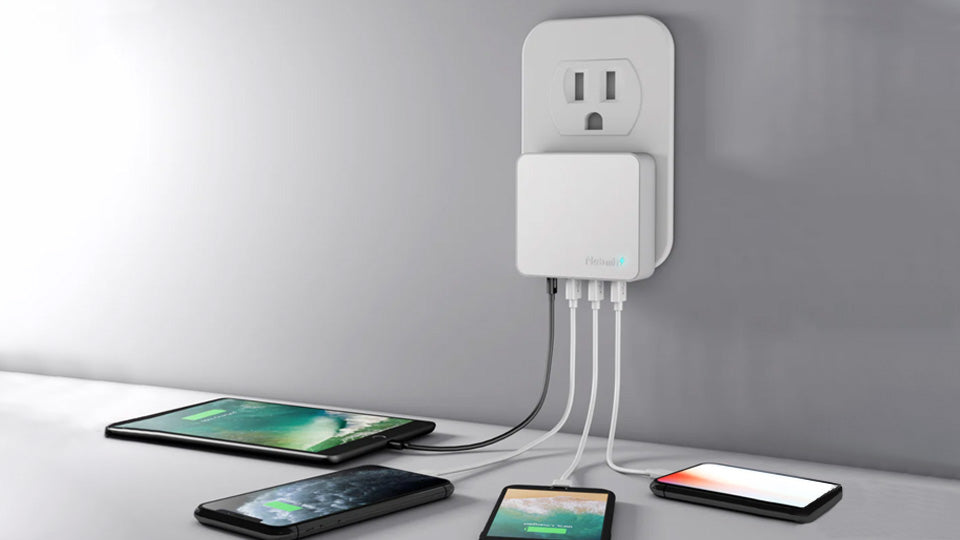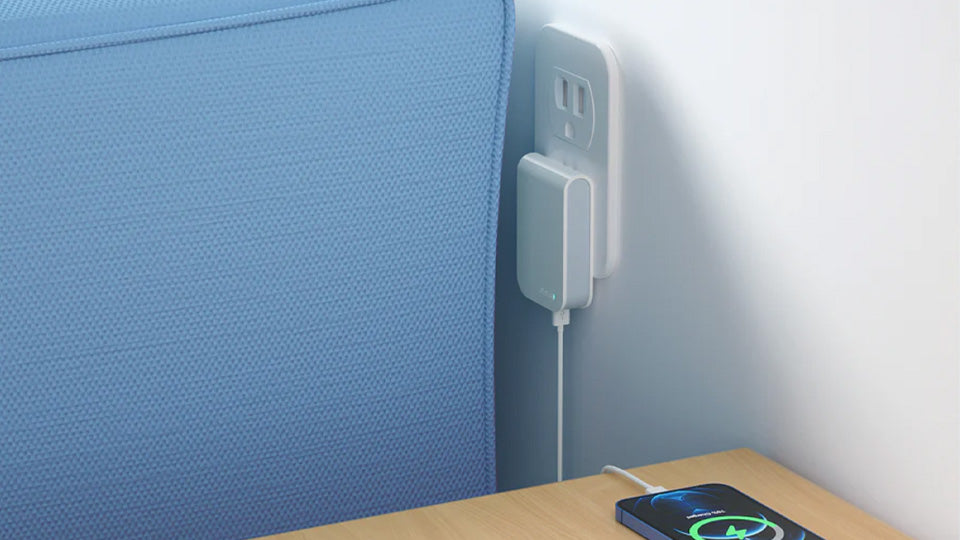Everything You Need to Know About 3-Port Wall Charger and USB Charging
While we use both the 3-port wall charger and USB charging to charge our various gadgets, both methods of charging have their own pros and cons. So, in this guide, we will tell you everything you need to know about the differences between the two charging methods. Let’s get started!

How Does A Wall Charger Work?
A wall charger is a charger that lets you plug the device directly into the outlet. Unlike typical USB chargers that offer the users 500amps of current, the wall charger such as a 3-port wall charger can supply up to 600amps to the users. This means that you can now charge your phone in a shorter time.
There are different types of wall chargers available in the market. While some come with only two ports, others come with three ports as well. So, if you intend to buy a wall charger for your use, we suggest that you go for a 3-port wall charger. That’s because it is the universal standard of chargers and you will not have to buy a new charger every time you travel to a new country.
How Does USB Charging Work?
After using the adapters for years, the tech world has finally come up with a new charging method for the users. This method is known as USB charging. It solves the problem of wall-wart by completely transplanting it. So, instead of running around multiple wall plugs, you can use USB charging devices that are genuinely compatible with a third-party cable.
However, not all USB chargers are born equal. You might have noticed that some chargers are stronger than others. That’s because all of these devices offer different specs to the customers. This is what makes some of the powerful over others.
The actual working of the USB charger is quite simple once you get hold of it. The charger comes with a host and a device. The host is usually a smartphone or a laptop that allows you to charge the device directly from a power supply.
Traditionally, the device was only used to flow power in one direction. The flow of the direction was from the host to the device. However, with the advancement in technology, you can now transfer power in both directions.
3-Port Wall Charger vs. USB Charging: What You Need to Know
There are major differences between the 3-port wall charger and the USB charging. This is what makes these devices suitable for some people and unsuitable for others. So, make sure that you go through the pros and cons in detail and pick the one that is suitable for your needs.
For your convenience, we have listed the major differences between the two charging methods below. Let’s take a look at them!
1. Power Supply
According to the latest research, a typical USB charger can supply a maximum of 500amps of electric current at any given time to the users. On the other hand, the wall outlets such as a 3-port USB wall charger supply up to 600amps of current. This is what makes them faster than the USB chargers. This is what makes charging the device from a wall charger typically faster than charging it from a USB port.
2. Convenience Factor
When it comes to convenience, the USB charger certainly has an edge over the wall chargers. When you have a USB port to charge your smartphone and media player, you will have to carry fewer chargers only. So, even when you are away from your home base, you can conveniently charge your devices. USB charging also becomes useful when you have limited outlet access. You will not have to find the outlet as you can easily connect the device to your laptop’s USB port. Thus, when you have limited wall power, convenience can easily outweigh the slow charging time.
3. Wall Chargers Are Easy to Use
If you have several different pieces of gadgets that require multiple charging ports, you might be interested in a 3-port wall charger. With these chargers, you can easily charge your smartphones, tablets, and MP3 players at one single time. This is what makes them a perfect solution for your homes, hotels, offices, internet cafes, and other businesses.
In addition to this, the benefit of wall chargers also extends out to the aesthetics design of your homes and offices. The newest wall chargers such as the one offered by Nekmit are sleek and slim. This is what makes them a simple and modern solution for everyone. Not only this but there will be less clutter as well.
4. Power Usage
One important thing that you need to remember about the wall charger is that they can consume a considerable amount of electricity as compared to the USB charger. When you plug in the wall charger to the low-energy power device, it might radiate heat that is harmful to your device. So, you need to be extremely careful while picking a 3-port wall charger. Otherwise, you can damage your device to a great extent.
5. Wall Chargers Are Compact
A multiport wall charger offers a compact solution for your charging needs. Imagine the frustration you will have to go through when your battery dies out and you are out somewhere. However, when you have a compact wall charger, you can plug it in anywhere and charge your phone. Thus, these chargers work perfectly in case of emergencies and help you stay away from tough situations. Not only this, but you can use this charger to charge a variety of devices as well. This is what makes them versatile.

Final Words
We hope the above guide helped you understand the major differences between the 3-port USB wall charger and the USB charger. Now that you know the differences between the two devices, you can pick the one that best fits your needs. However, if you still have any question, feel free to contact us. We will be happy to assist you through!







Leave a comment
This site is protected by hCaptcha and the hCaptcha Privacy Policy and Terms of Service apply.